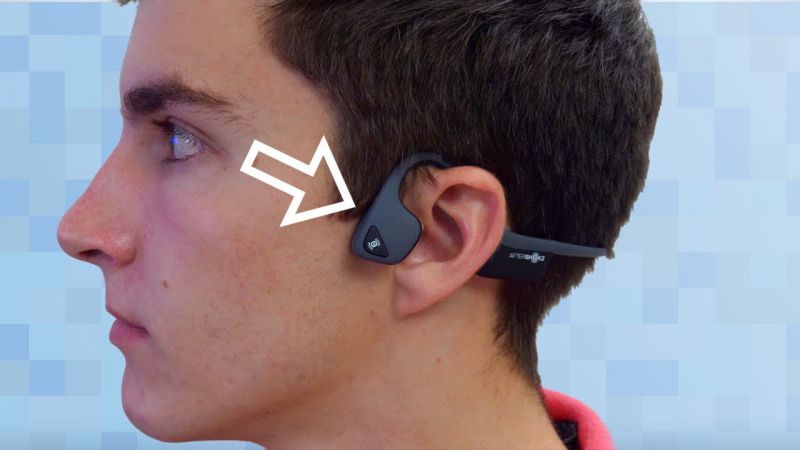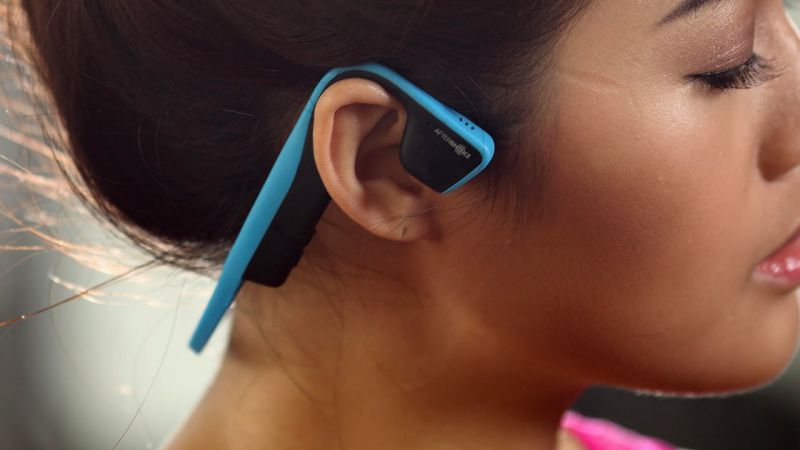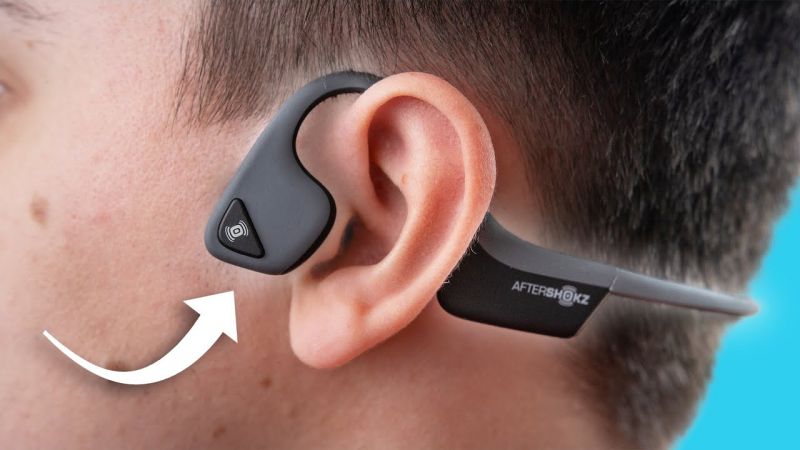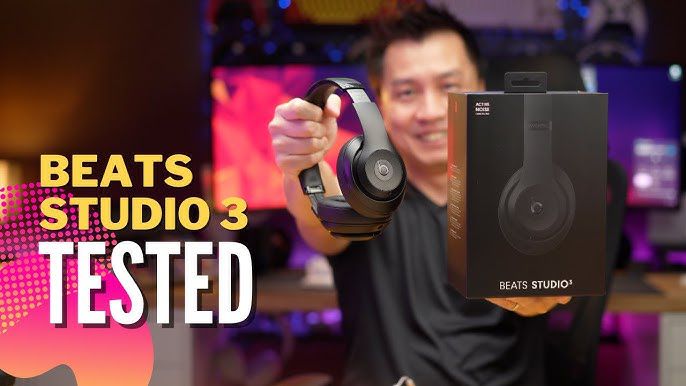Bone Conduction Headphones are a unique and innovative way to listen to music or audiobooks, offering an alternative to traditional earbuds or headphones. But how exactly do you wear these headphones correctly?
To wear Bone Conduction Headphones effectively, make sure to place them on your cheekbones, just in front of your ears.
The transducer pads should be snugly fitted to your skin, ensuring the headphones send the correct vibrations to your bones. Unlike conventional headphones, you don’t wear Bone Conduction Headphones inside or on your ears, but rather on your cheekbones.
It’s important to note that Bone Conduction Headphones work differently from traditional headphones. The technology behind these headphones involves transmitting sound through vibrations to the bones in your ears.
To learn more about the science behind bone conduction headphones and how to use them, continue exploring. So, let’s get into further details about how to wear bone conduction headphones!
Contents
What Are Bone Conduction Headphones?
Bone conduction headphones are a game-changer in the world of audio devices. This makes them a great option for people with hearing difficulties or those who can’t comfortably wear regular headphones. The technology behind bone conduction headphones was initially developed for military and medical use, but it has since been adapted for consumers.
The headphones consist of a transducer that rests against the cheekbone and sends vibrations through the bones to the inner ear, allowing the user to hear both the audio and their surroundings at the same time. One of the standout benefits of bone conduction headphones is that they don’t damage the ear drum, making them ideal for those with delicate ear structures or a tendency towards ear infections.
So, if you have a hearing aid, you can still enjoy your music and podcasts without any hindrances. Furthermore, bone conduction headphones offer a range of benefits over traditional headphones.
They’re a great option for those with hearing difficulties, they provide a safer listening experience for outdoor activities, they’re comfortable to wear, and they don’t interfere with hearing aids. If you’re looking for an innovative and unique audio experience, consider giving bone-conduction headphones a try!
How Do Bone Conduction Headphones Work?
Bone conduction technology offers a revolutionary way of delivering sound to your ear. Instead of the traditional method of air transmission, they transmit sound waves directly to your inner ear through the bones in your face and head.
To understand this unique method, let’s compare it to traditional headphones or earbuds. When you use these devices, the sound is produced by the movement of the parts in the headphones and travels to your ear through the air.
When it comes to placing the headphones, you must position them on your cheekbones with the transducers touching your skin for maximum transmission of sound waves to your inner ear. As a result, you will experience optimal audio quality.
Furthermore, bone conduction headphones offer a new and innovative way of listening to audio while still maintaining awareness of your surroundings. By transmitting sound directly to your inner ear through bones in your face and head, they provide a unique and immersive audio experience.
A Simple And Powerful Guide On How To Wear Bone Conduction Headphones:
Bone conduction headphones are a unique type of headphones that deliver sound to the listener by vibrating the bones in the head, bypassing the eardrums. Here is a guide on how to wear them correctly for optimal performance.
Step 1: Choose The Right Fit
Bone conduction headphones are designed to sit on top of the cheekbones, close to the ear, so it’s important to choose the right fit. Most bone-conduction headphones come in different sizes, so make sure to try different sizes until you find the one that feels most comfortable and secure. If the headphones are too loose, they may slide down during physical activity, and if they are too tight, they can cause discomfort.
Step 2: Properly Place The Headphones
Once you have found the right fit, make sure to properly place the headphones on your cheekbones. The headphones should sit just in front of the ear and should not touch the ear or block it. The proper placement is important for sound quality and to ensure the headphones do not interfere with hearing. The sound is delivered through the bones to the inner ear, so proper placement is crucial.
Step 3: Adjust The Tension
Adjust the tension of the headphones to make sure they stay securely in place while you’re wearing them. Some bone conduction headphones have adjustable straps, while others have a flexible band that can be shaped to fit your head. Adjusting the tension allows the headphones to stay in place, so you can move around without worrying about them falling off.ss
Step 4: Enjoy Your Music
Once you have properly placed and adjusted your bone conduction headphones, you can start enjoying your music. With bone conduction headphones, you can still hear your surroundings, so it’s important to be aware of your surroundings when using them.
What Are The Benefits Of Bone Conduction Headphones?
There are multiple benefits but it is even better when you completely know how to wear bone conduction headphones. Bone conduction headphones are a unique form of headphones that vibrate sound through your bones instead of conventional listening methods.
This allows users to listen to their music while keeping their ears open to external sounds, making them an excellent choice for people with hearing loss and hearing problems.
Safe Listening
The open-ear design of bone conduction headphones makes them a safe choice for listening to music, as they don’t block your ears. Bone conduction headphones offer a unique and safe way to listen to music while retaining your awareness of your surroundings.
Whether you’re someone with hearing problems or just someone who loves running or jogging, bone-conduction headphones are an excellent choice for your listening needs.
Awareness Of Surroundings
This is especially important for people who love running, jogging, or other outdoor activities where they need to be aware of their surroundings to avoid accidents.
Pros And Cons Of Bone Conduction Headphones:
- Comfortable fit: Bone conduction headphones are designed to fit comfortably and securely on the bones in front of the ear, without putting any pressure on the ear itself. This makes them ideal for extended listening sessions and reduces the risk of discomfort or pain.
- Unique Audio Experience: They transmit sound vibrations directly to the cochlea, providing a clear and natural sound that is not muffled or blocked by external noise.
- Improved SWafety: This makes them ideal for outdoor activities like running, cycling, or hiking, where being aware of your surroundings is crucial for safety.
- Suitable For Hearing Aid Wearers: Traditional headphones can interfere with the sound quality of hearing aids, but bone conduction headphones do not. This makes them a great option for individuals who wear hearing aids, as they provide an improved audio experience without affecting the sound from the hearing aids.
- Battery Life: Some bone conduction headphones rely on battery power to function, which means that you may need to recharge the headphones after extended periods of use. This can be inconvenient, especially if you are traveling or on the go.
- Limited Sound Quality: While bone conduction headphones provide a unique audio experience, the sound quality may not be as high as traditional headphones.
- Higher Cost: Compared to traditional headphones, bone conduction headphones can be more expensive, making them a less affordable option for some individuals.
- Water Resistance: Some models of bone conduction headphones may not be water-resistant, making them unsuitable for use during activities that involve water or wet conditions.
Related Posts:
- What Headphones Does Markiplier Use [VR or Not]
- Are Beats Studio 3 Sweat Resistant / Proof?
- 3 Best Pairs Of Gaming Headphones
Frequently Asked Questions
Q. Are Bone Conduction Headphones Waterproof?
Ans. It is important to check the specifications of the specific model before purchasing to ensure it is suitable for your needs.
Q. Can Bone Conduction Headphones Be Used For Phone Calls?
Ans. Yes, most bone-conduction headphones come equipped with a microphone and can be used for phone calls in addition to listening to music and other audio content.
Q. How Do Bone Conduction Headphones Compare To Traditional Headphones In Terms Of Sound Quality?
Ans. Bone conduction headphones deliver sound in a unique way compared to traditional headphones, and some people may prefer the sound quality of traditional headphones.
Closing Thoughts
No doubt that bone conduction headphones are a great alternative for those who want to enjoy music or take calls without blocking their ear canals. To make the most of your bone conduction headphones, it’s important to wear them correctly.
Then, place the earbuds just in front of your ear canals, making sure they are in contact with your skin. It’s also important to adjust the headband correctly so that it stays in place, without being too tight or too loose.
To ensure optimal sound quality, make sure that the earbuds are in good contact with your skin, and that there are no obstructions between them and your bones. Moreover, bone conduction headphones are an innovative technology that offers a unique listening experience. So, go ahead, choose a pair of high-quality bone conduction headphones, and start experiencing the world of sound in a whole new way.



